Imagine you’re trying to plan a vacation, but realize there’s too much work that goes into researching the best vacation spot, what hotel to stay in, where to go sightseeing, and so on.
So you decide to look for a service to help you plan out your vacation.
You search Google for “vacation planning services” and find these two websites:

Which one makes you want to learn more about their services?
I’m willing to bet twenty imaginary dollars that it was the second one. Why? Because their value proposition (the biggest benefit they’ll give you) is the center of attention on the front page.
In contrast, the main attraction of the first website is the company’s logo followed by a block of text. Even worse, that block of text starts out with the company’s name.
Now compare those examples to your own website. Are you immediately conveying the value that prospects will get from your business? Have you asked customers for feedback on it?
It turns out that many businesses don’t succeed because they have weak value propositions.
I’m not going to let that happen to you.
I’ve done the research and looked at over 26 successful companies to understand what goes into writing a powerful value proposition and help you create your own.
By the end of this article, you’ll be able to write value propositions better than 97% of companies out there, without hiring an expensive consultant to do it for you.
Get Your Free Value Proposition Workbook Here!
Here’s what we’re going to cover:
%(tableofcontents)
It’s going to be a lot of information, but as you’ll see from the two case studies and ten examples, the value proposition is going to be one of your biggest business assets.
Let’s get started.
What Is a Value Proposition
A value proposition is a statement of how your product or service will benefit your customer. It clearly defines what you will do for your ideal customer and why you’re better than your competitors.
According to ChartBeat, you have between 5 to 30 seconds to hold the attention of a viewer on a landing page. In other words, if you can’t communicate your value in less than 30 seconds, you’re losing money.[*]
Let’s pretend you’re a software-as-a-service company that sells an ecommerce marketing tool.
When a prospect searches Google for “best free ecommerce marketing tool” and clicks on your link, you want them to stay on your website.
Compare a generic statement, “We help you with ecommerce marketing,” to Sumo’s value proposition: “The Easiest Way To Turn Your Visitors Into Ecommerce Customers.”

While “We help you with ecommerce marketing” says what your company does, “The Easiest Way To Turn Your Visitors Into Ecommerce Customers” clearly states what the prospect would get from using Sumo.
Remember, it’s about the prospect and how they will benefit.
What Goes Into Creating A Powerful Value Proposition
While value propositions come in various forms, a basic formula includes four things:
- A headline
- A sub-headline
- A list of key benefits
- An image
The headline is the most important part of your value proposition. Eye-tracking studies have shown that people often look at the headline more than anything else. Use your headline to give a quick statement summing up the benefit of your offer.
WordPress did their headline well when starting to grow their business:
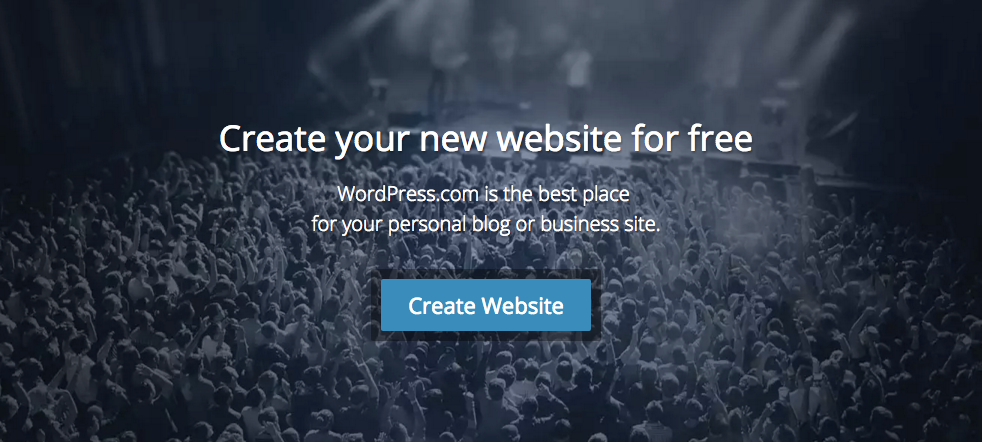
Don’t make your headline too long. It should be short and quickly grab the viewer’s attention so they’ll read the subheadline, where you can provide a more specific explanation of what you’ll do for them.
While a value proposition should quickly communicate benefits, sometimes more detail is better. When you want to go into more detail, you can provide a list of key benefits or features that will speak to the viewer.
Trello has a powerful subheadline and communicates the benefits of using their tool well (we’ll explain this in detail soon).

Finally, you can use an image to tie together those elements and further emphasize your benefits.
The image should be used with intention. A pretty but irrelevant picture won’t do much to emphasize your value proposition. However, a picture of your product or someone using your product would solidify your value prop. AirBnB does this well.
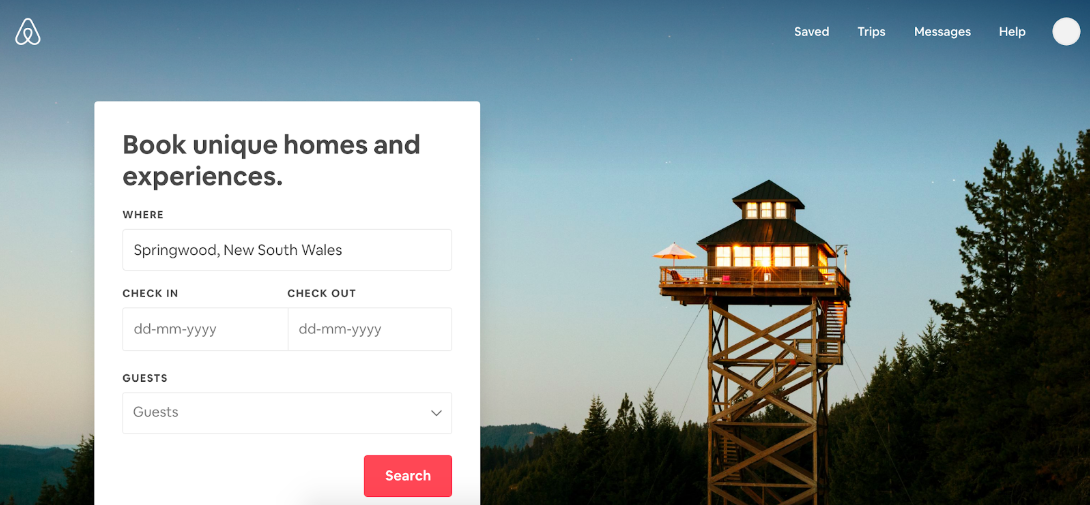
10 Examples Of Great Value Propositions (And Two Bad Ones)
Now you know what goes into a value proposition, but what does a good value prop look like?
One of the best ways to learn is by looking at examples. So we collected ten examples of successful companies when they were starting out that makes it immediately clear what they do. You can use these as inspiration for coming up with your own.
WordPress
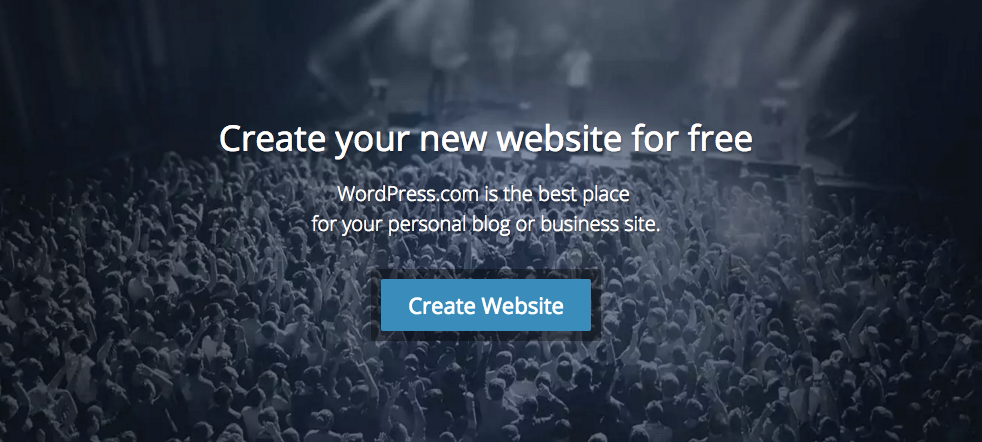
What is the company selling? A free website.
What is the benefit of using it? It’s free.
Who is the target customer for this product or service? People who want a personal blog or a business site.
What makes the offering different from competitors? It’s free, and purpose-built for personal sites and business blogs.
Bonus: Clear call-to-action to create a website.
Apptimize
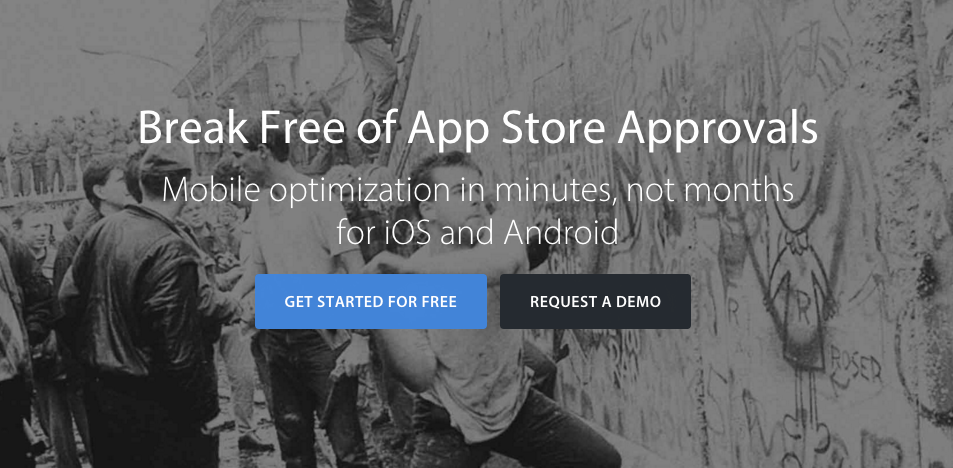
What is the company selling? Tools that help with mobile optimization.
What is the benefit of using it? Quickly optimize mobile apps.
Who is the target customer for this product or service? While the text doesn’t directly state who it’s for, the language that’s used targets developers who know what mobile optimization is and are frustrated with app store approvals. This is a great example of targeting a specific audience.
What makes the offering different from competitors? It’s not clear how it’s different, but the benefit is very clear already. (With deeper research, you’ll find that this is a very blue ocean area of software so it makes sense why they don’t focus on differentiation.)
Bonus: The background image emphasizes the idea of breaking free.
Mint
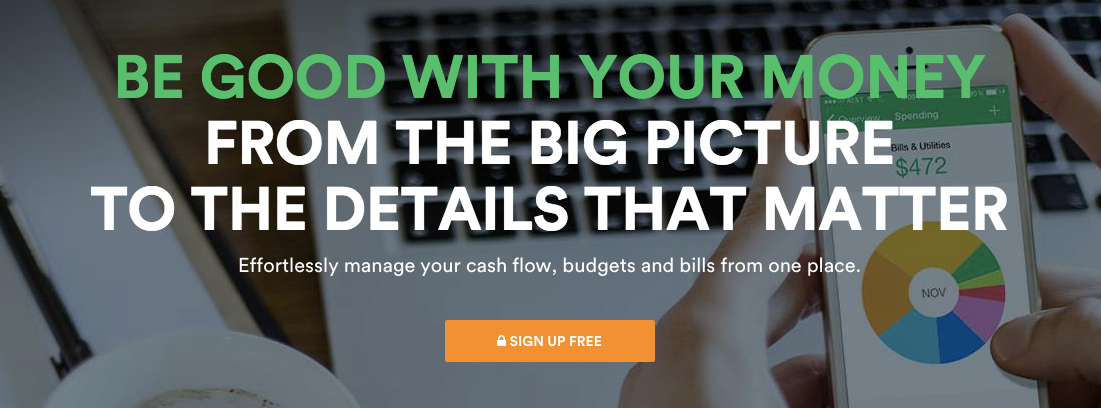
What is the company selling? A tool to help you manage your money.
What is the benefit of using it? Easily get better at managing your money.
Who is the target customer for this product or service? People who want to better manage their money.
What makes the offering different from competitors? Instead of using one tool to manage budget and another to manage bills, you can do all of it in one tool.
Stripe
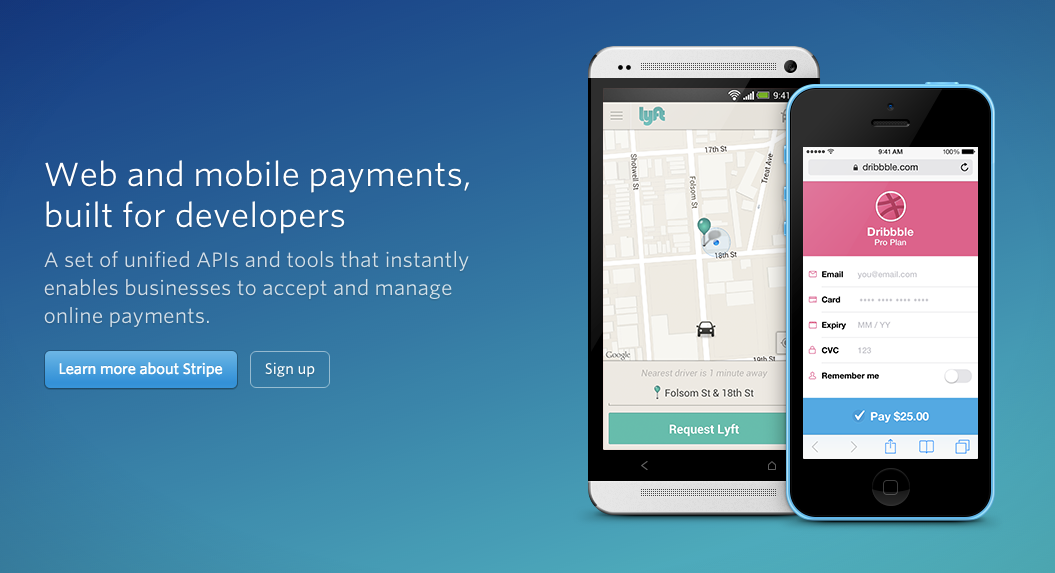
What is the company selling? Web and mobile payment software.
What is the benefit of using it? Easy for developers to integrate it into a business.
Who is the target customer for this product or service? Developers who want a customizable payment system. This is clear because you likely won’t know what an API is unless if you’re a developer or work in the software industry.
What makes the offering different from competitors? It’s easy to set up and made for developers. The target audience will know of other services like PayPal which doesn’t offer nearly as much flexibility for developers.
Trello

What is the company selling? A tool that helps you visually organize anything.
What is the benefit of using it? You can remove a lot of random ways to keep track of information and condense it all into one place.
Who is the target customer for this product or service? People who want to be more organized.
What makes the offering different from competitors? It takes tasks and information and makes it visual.
Bonus: While Trello forgoes the colorful background and images altogether, they’re very clear about what they’ll help you do: visually organize anything. Then even take the extra step and state exactly what they’ll replace to make your life simpler.
SkillShare
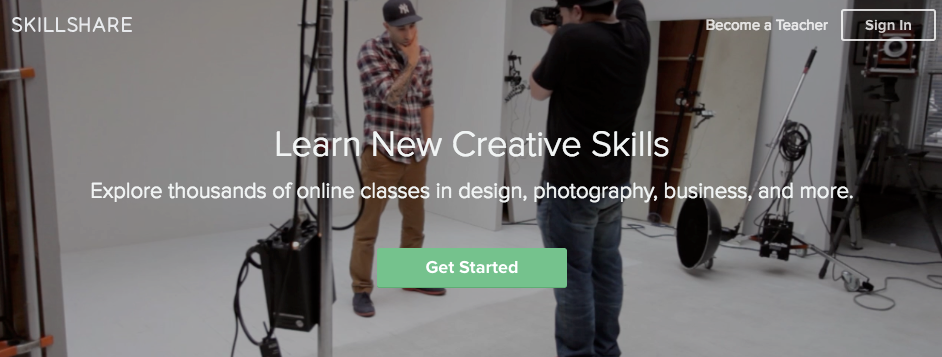
What is the company selling? Online creative courses.
What is the benefit of using it? Learn a new, creative skill online in your own time.
Who is the target customer for this product or service? People who want to learn new skills but can’t (or don’t) want to commit to a physical location.
What makes the offering different from competitors? Rather than simply saying “learn new skills” or “take online courses” they make it clear that it’s for learning creative skills.
Bonus: They use a background video that shows people learning and practicing their newfound skills.
Unbounce
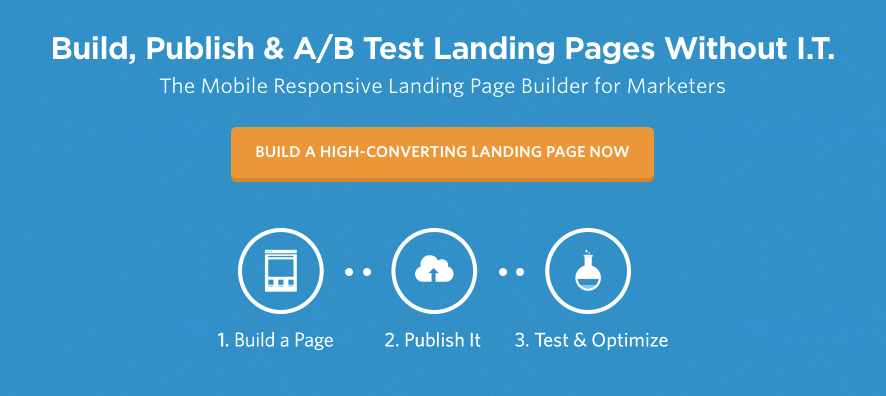
What is the company selling? A tool that helps marketers build mobile responsive landing pages.
What is the benefit of using it? Bold and clear: build, publish, and A/B test landing pages without I.T.
Who is the target customer for this product or service? It’s clearly stated who it’s for: marketers. The addition of “without I.T.” to the end of the benefit statement emphasizes that. Marketers who haven’t used this tool know how difficult it can be to build a landing page and have to work with developers.
What makes the offering different from competitors? It’s easy-to-do and you can do it yourself.
Bonus: Their call to action, “Build a High-Converting Landing Page Now” uses powerful language.
Zapier
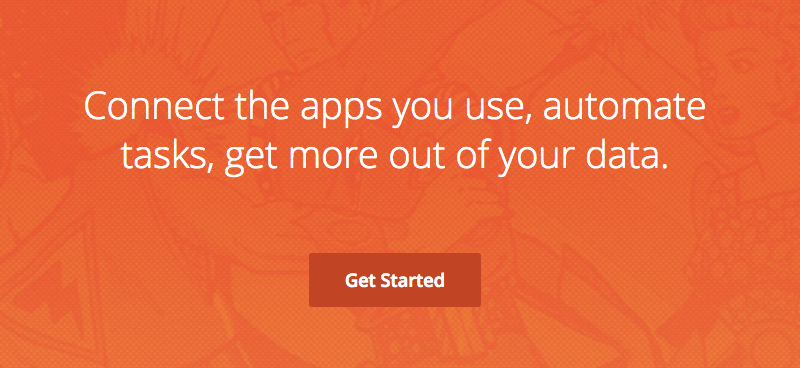
What is the company selling? A way to connect your apps.
What is the benefit of using it? Automate tasks and get more out of your data.
Who is the target customer for this product or service? People who want to be more efficient with their apps. Anyone who uses more than six apps has had the trouble of organizing all that information and would love to connect them and make it easier to manage.
What makes the offering different from competitors? Instead of offering another app, it’s a way to connect your apps.
Bonus: They described their value in 13 words.
GrooveHQ

What is the company selling? Simple help desk software.
What is the benefit of using it? It’s simple and provides customers with personal support.
Who is the target customer for this product or service? Companies who’ve tried other help desk software and found they were complicated to use.
What makes the offering different from competitors? It makes it easier to give personal support instead of sending customers to an automated system.
Bonus: They use a video to show how easy it is to use Groove.
SoundCloud
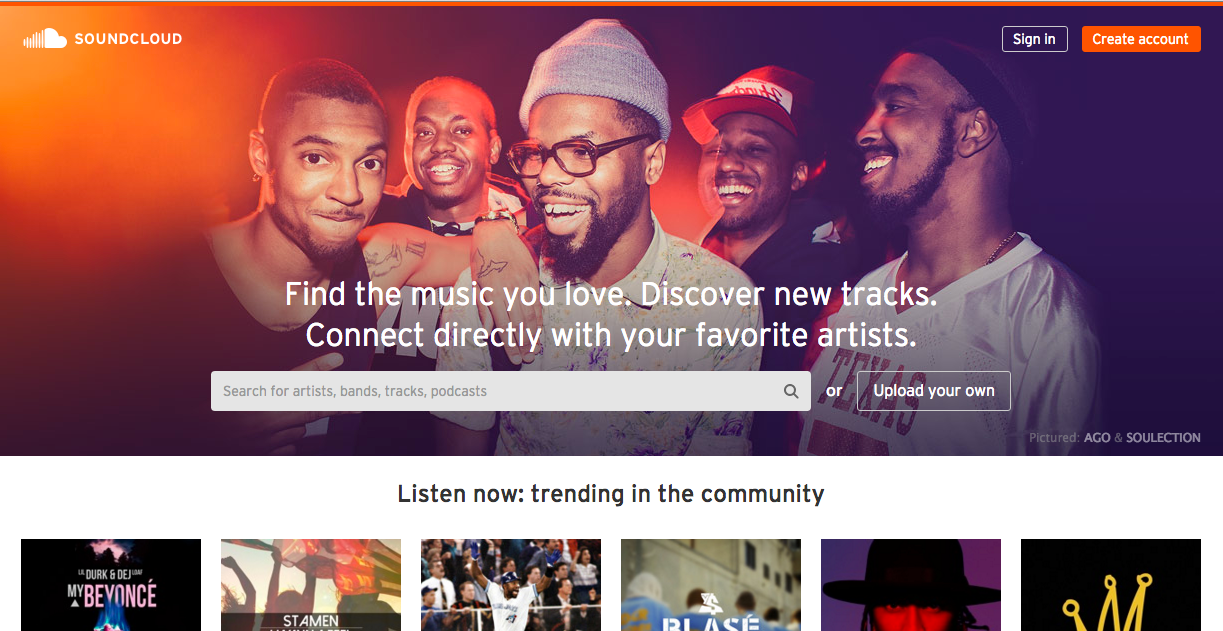
What is the company selling? A tool to find music and connect with artists.
What is the benefit of using it? It’s easier to find new music.
Who is the target customer for this product or service? People who like music.
What makes the offering different from competitors? You can connect directly with your favorite artist rather than just listen to their music.
Bonus: They provide immediate value by showing trending music so the viewer can find new music right away.
While there are companies with amazing value propositions (like the 10 above), unfortunately, there are some popular companies who, surprisingly, could have better value propositions.
Here are two examples.
Constant Contact
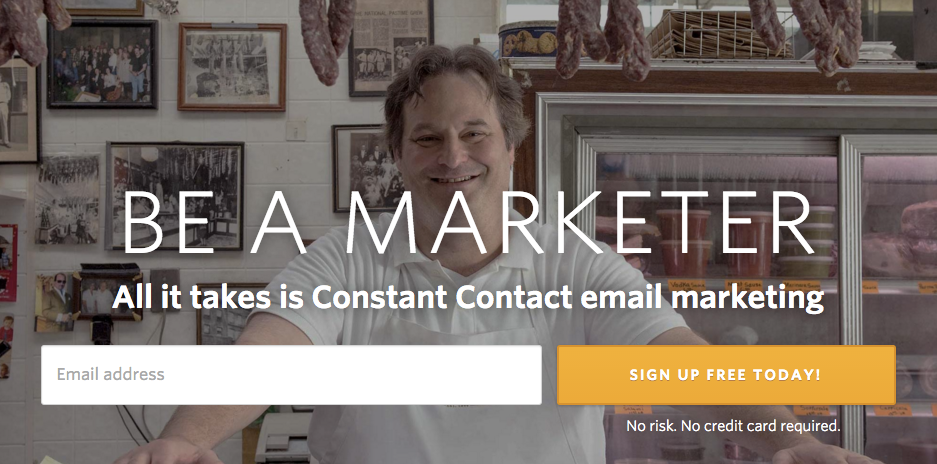
What is the company selling? Software that helps with email marketing.
What is the benefit of using it? You become a marketer.
Who is the target customer for this product or service? Someone who wants to be a marketer.
What makes the offering different from competitors? It’s specifically for people who want to become marketers.
I had a tough time with this one. Most of my answers are about becoming a better marketer because that’s all they really gave me. They don’t explain how they help with email marketing or what benefit you get from using their product.
What makes it worse is that background image doesn’t convey someone becoming a better marketer. If the guy in the picture (I guess a chef or butcher) was on a computer doing some sort of marketing, it’d be more convincing. Instead of making the message more clear or emphasizing a point, the image further confuses me.
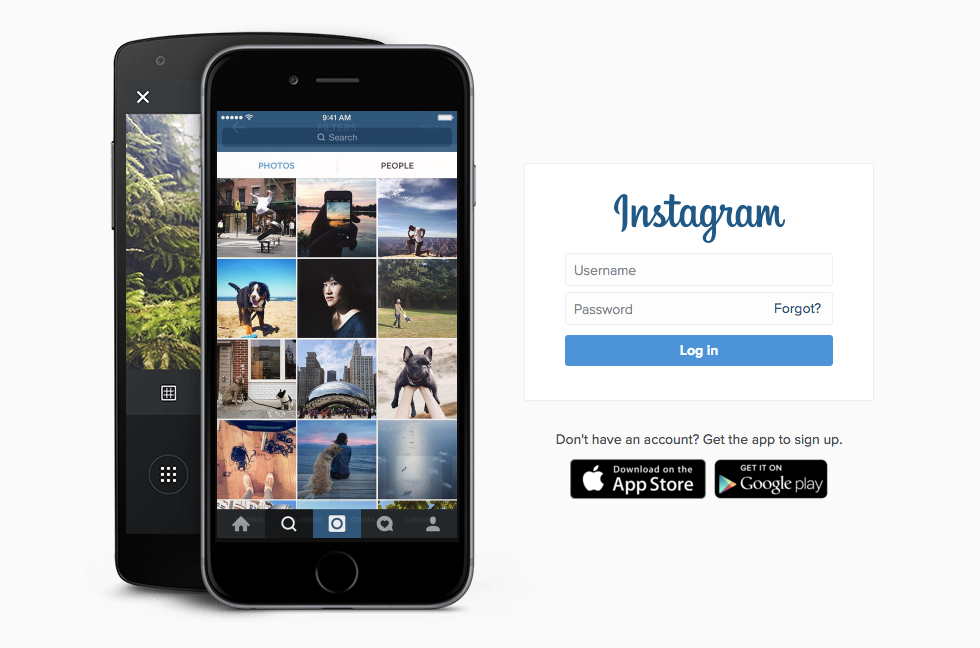
What is the company selling? A mobile app that has something to do with pictures.
What is the benefit of using it? I’m assuming that the photo is an example of how I can use the app to browse and maybe take photos.
Who is the target customer for this product or service? Photographers.
What makes the offering different from competitors? I don’t know.
This was a tough one, too. Instagram takes a bold stance and doesn’t use words to convey their value proposition.
Instead, they attempt to convey it through an image of the app. While a company like Instagram can get away with this, this tactic wouldn’t work well for a new or small business.
That’s all the examples I’ve got for this section, but if you want my full list of 26 effective value proposition examples, click the button below.
Download My Value Proposition Examples Swipe File
4-Step Process For Creating A Winning Value Proposition
It’s clear that a strong value proposition is necessary, but how do you come up with one?
Step 1: Research your audience
The first step is to understand your audience and what motivates them. This will shape the language you’ll use to communicate with them and help you pinpoint the biggest selling point of your product.
This can be done through interviews with current customers or people you assume would use it.
It’s much easier to determine your audience if you already have customers because they’ve already demonstrated that they’ll buy from you. Talk to them. Ask them how your product or service is improving their businesses and their lives.
You’ll have to dive deep in your interviews to answer questions like:
- What do they do?
- What is their biggest problem or pain point?
- What type of language do they use?
You might be surprised to find that you might be helping in significant ways that you didn’t think about.
Step 2: Create an ideal buyer persona
After researching your audience, analyze all the qualitative data and look for patterns.
Is there a pain point that was mentioned multiple times? Is there a certain industry that a lot of people are in? If they already use your tool, was there one benefit repeated by multiple people?
A clearly defined persona will help you better understand your prospects as human beings – what drives them, what they value, and what they aspire to be – ultimately helping you speak to them.
Step 3: Research your competitors
Your conversations with current customers may uncover other tools they used before finding your product, or tools they might be using alongside your product.
Look into those tools – especially if they directly compete with your business – and figure out what you do better than them.
There’s no point having two businesses doing the exact same thing. It doesn’t give prospects a reason to choose you over your competition.
Step 4: Determine the primary benefit of your product
Now that you understand your ideal buyer persona and your competitors, it’s time to determine your primary benefit.
While there may be multiple reasons to use your product, there’s often one thing that your audience is most interested in.
To help figure this out, think of this step in terms of the human desires stated by Drew Eric Whitman in Cashvertising.[*]
Eight basic human desires:
- Survival, enjoyment of life, life extension
- Enjoyment of food and beverages
- Freedom from fear, pain, and danger
- Sexual companionship
- Comfortable living conditions
- To be superior, winning, keeping up with the Jones
- Care and protection of loved ones
- Social approval
Nine learned desires:
- To be informed
- Curiosity
- Cleanliness of body and surroundings
- Efficiency
- Convenience
- Dependability / quality
- Expression of beauty and style
- Economy / profit
- Bargains
There will be one desire that your product or service will speak to most powerfully.
To add more credibility, you should go the extra mile and provide specific numbers. How exactly are you going to help your customer? Will you help them increase sales by 152%? Or help them save 13 hours a week? Concrete numbers provide concrete value.[*]
Altogether, the four steps above will help you create a value proposition that intersects between what your customer needs, what the market offers, and what you’re offering.
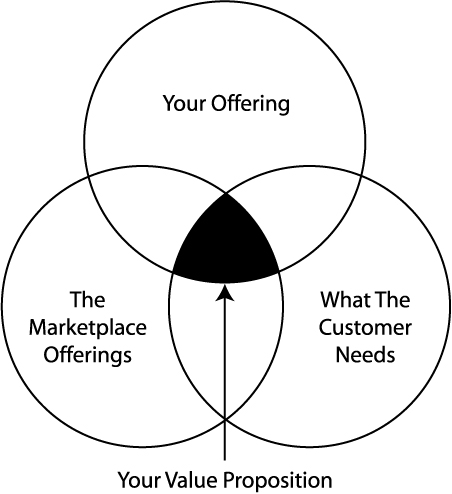
6 Templates To Help You Flex Your Value Proposition Writing Muscles
Now that we know what a good value proposition looks like and the research process, it’s time to think about how to write the value proposition.
As with most writing, it’s difficult to know where to start, so we’ve collected a few templates to help get your creative juices flowing.[*]
1. Geoff Moore's Value Positioning Statement
Geoff Moore popularized this concept in his book, Crossing the Chasm. This template helps answer the four questions a value proposition should answer which we discussed above.
Template:
For [target customer] who [statement of the need or opportunity] our [product/service] is [product category] that [statement of benefit].
Sample:
For non-technical marketers who struggle to find return on investment in social media our product is a web-based analytics software that translates engagement metrics into actionable revenue metrics.
2. Venture Hacks' High-Concept Pitch
In Made to Stick, Dan and Chip Heath explained how high-concept pitches convinced movie executives to invest large amounts of money in projects with little-to-no information. Nivi and Navel from Venture Hacks took this technique and applied it to startups.
Template:
[Proven industry example] for/of [new domain].
Samples:
- Flickr for video.
- Friendster for dogs.
- The Firefox of media players.
3. Steve Blank's XYZ
Steve Blank explained that if you can’t easily explain why you exist, none of the subsequent steps matter. Once you have a statement using the X, Y, Z format, ask people if it makes sense. If it doesn’t, give them a longer explanation, and ask them to summarize it back to you.[*]
Template:
“We help X do Y by doing Z”.
Sample: We help non-technical marketers discover return on investment in social media by turning engagement metrics into revenue metrics.
4. Dave McClure's Elevator Ride
In his How to Pitch a VC presentation, Dave McClure shares a simple three-item checklist to create a positioning pitch.[*]
Template:
- Short, simple, memorable; what, how, why.
- Three keywords or phrases.
- No expert jargon.
Sample: "Mint.com is the free, easy way to manage your money online.”
Bonus: Find out more presentation statistics you should know, plus presentation templates you may need.
5. David Cowan's Pitchcraft
David Cowan, a venture capitalist in Silicon Valley, shares useful guidelines in Practicing the Art of Pitchcraft.[*]
Template:
- Develop intrigue immediately by highlighting the enormity of the problem you’re tackling.
- Tell the audience up front what your company sells.
- Avoid jargon. Distill the differentiation down to one, simple sentence.
- Establish credibility by sharing the prestige of team members, customers, or investors.
Sample: One person dies of melanoma every 62 minutes. We offer a dermatoscope app for iPhone that enables people to easily diagnose their skin, leveraging patented pattern recognition technology trusted by the World Health Organization.
6. Clay Christensen’s Jobs-To-Be-Done
Clay Christensen, Harvard Business School Professor, says that designing an innovative customer value proposition begins with genuinely understanding the customer's jobs-to-be-done (JTBD).
JTBD is the “higher purpose for which customers buy products, services and solutions” – it is not the product, service, or solution itself.
“For instance, most people would say they buy a lawnmower to "cut the grass," and this is true. But if a lawnmower company examines the higher purpose of cutting the grass, say, "keep the grass low and beautiful at all times," then it might forgo some efforts to make better lawnmowers in lieu of developing a genetically engineered grass seed that never needs to be cut.”
The authors of The Innovator’s Toolkit suggest using a “job statement” to describe a JTBD.[*]
Template:
[Action] + [Contextual identifier].
Samples
- “Manage personal finances at home”. (Mint.com)
- “Preserving fun memories.” (Kodak’s Funsaver)
- “Listen to music while jogging.” (iPod)
Remember that these templates should be used to help you get ideas going. Don’t simply fill in the blanks and expect the value proposition to work right away.
How To Test Your Value Proposition To Make It Even More Effective
Now you’ve gotten your value proposition, but you’re not done yet. You’ve got to test and tweak it to find out if it actually resonates with your audience.
It turns out that 54% of companies aren’t testing their value propositions. That means while they’re sticking with an unoptimized value proposition, you can get ahead of the competition by improving yours.[*]
But why should you go to such extents to test if you’ve already interviewed your ideal buyer persona and current customers and found out what they want?
- People can’t tell you what they actually want. Take for example when Walmart decluttered their aisles because customers said they wanted it to be cleaner. This led to an estimated loss of $1.85 billion.[*]
- People act differently than how they say they would act. This is referred to as the introspection illusion which states that “people wrongly think they have direct insight into the origins of their mental states.”[*]
Up until now, the value proposition was created based off qualitative audience research, but you can only determine if your value proposition will convert viewers if you test it.
And even when a value proposition shows good results, don’t be afraid to test it further.
Here’s an example of why you should always be testing:
WiderFunnel worked with Electronic Arts on The Sims game, and ran A/B tests of in-game offers to find out what gamers valued most and what prompted them to buy.[*]
They tested three variations of a value proposition and one variation showed at least a 43% increase in conversions. Instead of being content, they ran another variation.
On the fourth variation, they saw a 128% lift in conversion rate. Again, instead of being content, they tested another variation to see if they could further improve that number.
While the increase in conversion rate capped out at 128%, this case study goes to show that you never know if your value proposition could be better unless you test it.
Here’s The Sims original value proposition “Join the Fun!”:
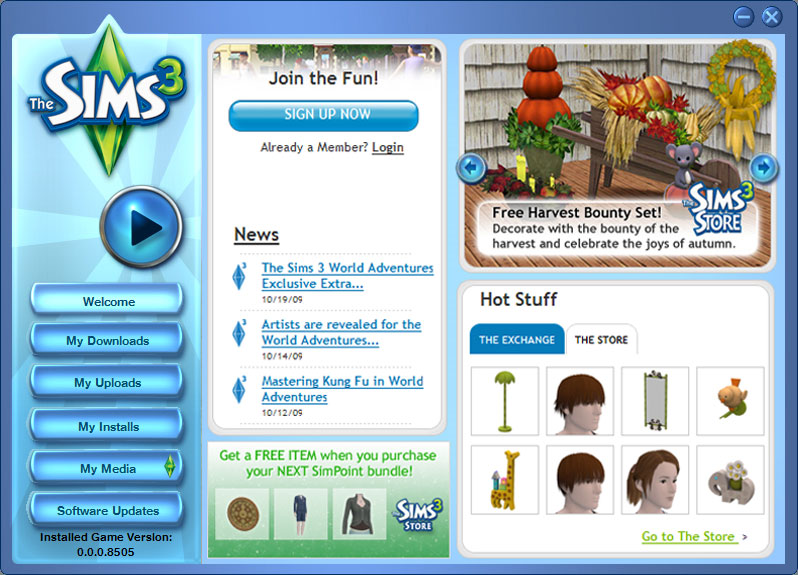
And the final version “Register Your Game and Get a FREE New Town Now!” that lead to a 128% lift in conversions:
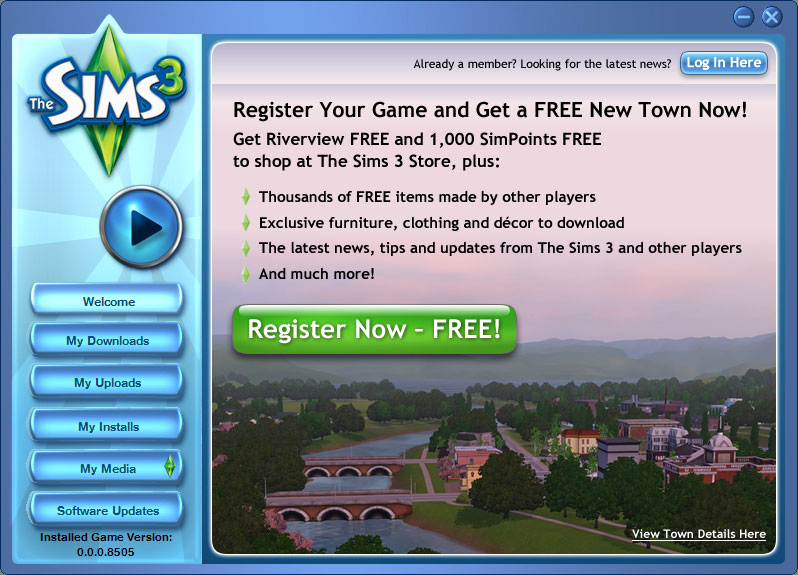
Remember that each A/B test of your value proposition should have a purpose.
Is there data that might point to another point of value that your customers care more about? Then test your original value proposition versus that other point of value.
Maybe you want to see if a different call to action will resonate better, you can A/B test that one word with the assumption that it’ll improve your conversion rate.
As stated by WiderFunnel, “by testing different value proposition approaches, you can find out what works best with statistical certainty before committing to one assumed positioning.”[*]
Your Turn
A value proposition can make-or-break your business. It’s important to sit down and create an ideal buyer persona, talk to customers, and think through what value your business truly provides so you can stand out from the competition.
Keep in mind that your value proposition may change as your business grows or the market changes.
As I stated earlier, this is the only guide you need to improve or create your value proposition. Save it so you can continue to reference it as you go through this process:
- Research your audience.
- Create an ideal buyer persona.
- Research your competitors.
- Determine the primary benefit of your product.
- Test and iterate.
Have questions about creating a value proposition? Ask us in the comments!
And make sure you get the complete 26 examples of powerful value propositions to help you craft the perfect one!
Grab the Value Proposition Swipe File
P.S. Want to learn the 10 growth hacks we’ve used to grow our email list to over 100,000 subscribers using unique value propositions + Sumo? Click here for our most actionable growth hacking ideas to grow your email list and traffic.
Add A Comment
VIEW THE COMMENTS